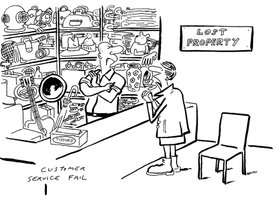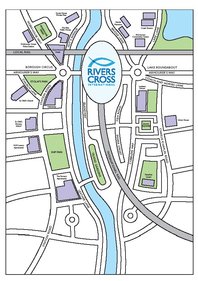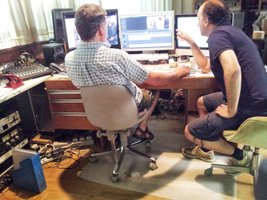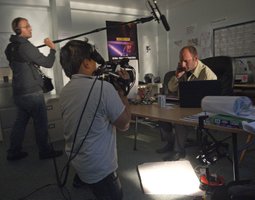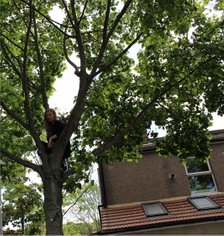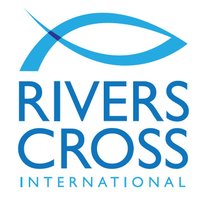Contact:
Special Projects:
As well as our existing portfolio it is also possible to provide tailor made projects and productions to enhance National Curriculum or local community initiatives. If you wish to discuss these, or be added to our mailing list, please feel free to contact us. We have expertise in special needs and mental health settings and our facilitators have a variety of training and experience with these groups.
Spanner in the Works
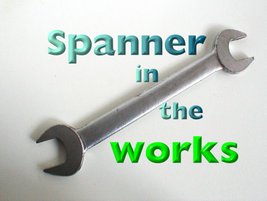
Educating, Entertaining, Inspiring - Workshops and Productions in All Media
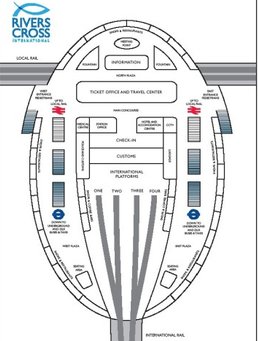
The Riverscross Soap Opera Project
A six year arts and mental health media project, creating a soap opera set in an international railway station.
The Riverscross soap opera has been created from the characters and storylines developed by the young people we have been working with over the past six years, filmed with professional cast and crew and each episode screened to an invited audience at a cinema in London.
It is a brand new soap opera, originally created by young people at Snowsfields Adolescent Psychiatric Unit.
The first three years of the RIVERSCROSS project at the Snowsfields Adolescent Psychiatric Unit was funded by Guy's and St.Thomas' Charity and run by Spanner in the Works, complementing the drama workshops we have been running there for the past fifteen years. The following three years, funded by The South London and Maudsley Charity, saw us branch out to the Royal Bethlem Hospital, Radlet Lodge, Newhaven School and Oakview Hospital School. We have also added new elements, such as cartooning and audio techniques, to the project as it has developed.
With the students we created a brand new soap opera. It is a drama-based project that results in a piece of filmed work each year, developed and scripted by the young people and then made using professional actors and filmed by a professional crew.
The fictional basis for the idea is an imaginary international railway terminus called RIVERSCROSS INTERNATIONAL. The soap opera form means that we can create a whole range of storylines, some short and some long, some comic, and some more serious.
The project was developed (and workshops are led) by Darren Rapier and Tony Coult, who between them have a great deal of experience as youth drama workers, but also have track records as writers of TV, film and radio drama. Along with other professionals from the industry this enhances the quality of the project as a whole and offers an insight into the real world of drama production (Darren still currently works on BBC TV and radio soap opreas).
Soap opera, as a form, allows many creatives to work on the same product - even if this is at different times and in different places; that is why it is a perfect model to connect the varying talents and interests of a large group of young people over a long period of time. Young people create every aspect of the series, including all the characters, music, logos, maps, design, style, storylines etc...
In the first stage we created a 'precinct' (the world where the action takes place), then a ‘Series Information Document’ of the characters, their relationships and histories and a history of the Riverscross area. The graphics of the Riverscross logos and the map above were all created by the young people, with the help of a graphic designer. With a professional musician the young people created a theme tune and all the incidental music for the series, and with producers, directors and actors refined their stories for the episodes each year.
By using professionals in this way it has given the work an enhanced status and the young people the self-esteem of seeing their work done in a polished and professional way. The young people have been able to help right up to and beyond the filming.
The screenings at Shortwave Cinema and at the BFI have been a great success, with an invited audience of the young people who created the series and their families, health professionals and professionals form the TV and film industry.
Below is some more detailed information about what has been achieved so far. Riverscross was a blank canvas; a socio-geographical blank Ordnance Surveyor’s page: It was up to us to fill in the detail. This is how it was created...
THE PRECINCT
The ‘Precinct’ is where the story is set, the ‘world of the story’. Think Albert Square (EastEnders), Holby City Hospital (Holby and Casualty), The Mill (Doctors), Sunhill (The Bill), Coronation Street (Coronation Street).
The young people created a map and an historical and contemporary account of the area. This included who had lived here in the past, how the area has changed and what the future plans may be. This was presented as a study (as if of a real area), with a presentation and question and answer session at the end of Phase I.
They then created he world of the story, the buildings and streets, the socio-economic environment and the history of the area. With Graphic designer Russ Hodgson the students created the logo for the series and the station; also with Russ they created a 'precinct' map of the station and the surrounding area (above). With Ed Thomas they created a theme tune for the series and with actors from the Union Theatre they developed the characters they had created and with Tony Coult and Darren Rapier. They built and expanded the world of the drama series and brought all these elements together to form the 'Series Information Document' or SID. This is a document used by all creatives on a TV soap opera (sometimes called 'the bible') and it contains all the information you need about the characters, their surroundings and relationships, as well as any technical or background information about the series.
CREATING THE STORIES
We then moved onto storylining, with visits and master classes from actors, writers, directors and producers from popular TV, Radio and internet soaps. Hollyoaks Director Bruce Webb came along and so did the producer of Sofia's Diary Enrico Tessarin.
Using the characters and places we had created we developed storylines, looking at who inhabited our new creation and how they interacted with each other and their surroundings. We worked from photographs and research, using the SID and expanding some of those biographies we had already created. We created ‘back stories’ for the characters and places and fleshed them out, giving them a family and cultural history. We looked at their relationship to each other (and to the area) and started to think about what had happened to these people before we ever see or hear of them in the soap - and what will happen to them over the first few months of the series.
This process is known professionally as ‘storylining’ and, as with real TV series, we used our writer’s (the students and staff) to brainstorm ideas and to discuss what would and could happen. As we were dealing with the opening of a new series it was necessary to grab our audience and set up our world and our characters within the first episode and then hook them into the rest of the series with exciting and interesting mixture of dramatic events and emotional journeys.
The actors came in and worked with the young people and staff to bring the characters to life. The young people enacted parts of story ideas in character and developed those characters through improvisation and being in role. We then moved on to developing those stories into TV scripts, and again the professional master classes helped us to get the best out of what we had and to inform students of what it’s really like to work on a TV continuing drama series.
In the final phase we scheduled and produced our work as a piece of TV drama. It was decided that, as this was our first year, we would make an extended trailer. We took all the storylines and developed them into script form and then decided on what would be included in the trailer. It was then filmed with a professional crew and cast on location at Waterloo Station, Creek Road Deptford and New Treatment Studios.
In the following years of the project we developed the characters further, introduced some new ones and created more stories than we could possibly film. We have returned to and redeveloped the SID, extended biographies and relationships and worked again with professional masterclasses in specific skills. We have also extended our locations, filming at the DLR and in the streets of Greenwich - even on the hospital ward.
We are currently plannig and developing an event to share our practice and experiences during this project and will be inviting people to take part in a celebration and sharing of our work. Please follow the Riverscross Project blog for more information.
As a model we now hope to roll the project out to other special needs and mainstream groups, so please contact us if you would be interested in finding out more.
Curriculum Areas Covered and Feedback
History - the chosen “precinct” (or setting) for the series was an imagined International Railway terminal, but its south of the river location between Deptford and Greenwich placed it close to many sites of London history. The local story of the imagined Riverscross could be well integrated into the actual River Thames history. Young people developed the ‘history’ of this imagined area, based on research of actual information and maps from the past.
Geography - the precinct again needed mapping and defining according to its physical location, drawing on its history and its proximity to the economic centres of city life; the mapping generated discussions on social and physical geography. We took photographs of the local area and looked at why buildings had been built where they were and how they had changed.
PHSE, SMSC – By creating characters, young people looked at demographics and decided who lived where, what they did and what their relationships were. They had to be objective about who these new people were and justify why they were here. They also ‘played’ many characters, interacting with each other and the visiting actors, who would eventually play the characters they had created. They even ‘dated’ the characters, at a ‘speed dating’ event, where they took on many roles and interacted with each other.
Literacy – Young people wrote biographies and histories of the people and the area, they looked at storylines and scripts and how these differed from other forms of writing. They wrote stories, histories, newspapers, episode storylines and scripts. Skills attained included both creativity and form in their writing.
Art and Design – They created maps for the station and the surrounding area, with the help of a professional graphic designer. They created a logo for the series and for the station, trying many different forms before settling on one they liked. They looked at considerations that professional graphic designers would have to take on board.
Music (and Sound) – The young people worked with a professional musician to create a theme tune, looking a styles used in other soaps and creating something that fitted with the series. They also created atmospheric and incidental music, as well as a soundscape, that they used to inspire a story within the third episode of the series.
Media & Drama – There were masterclasses from producers and directors from the TV and film industry, with practical advice and exercises. There were also sessions where the young people directed the actors for camera, using terms and equipment used in professional production. They saw how editing worked, looked at storyboards, ‘rough-cuts’ and raw footage of episodes. Throughout the project genuine television templates and references were made, so the young people learned the language and style of film and television continuing drama. All of these were from genuine BBC source material and training. The young people also had the chance to act with professional actors and talk to them about their careers, as well as creating material through drama activities.
Careers/ Life Skills – As all the visiting artists, along with Darren and Tony are working artists in their art form the young people had a great deal of contact with industry professionals. They were free to ask informal questions, along with what they were actually learning, to give them an insight as to what these jobs actually involved and the reality of doing them for a living.
Feedback:
'Based on feedback from teaching, nursing and the professional staff of psychiatrists and psychologists, we offered a significant contribution to the intellectual and emotional progress of individual young people, during their stay in the Unit. As well as specific skills and learning related to areas of the curriculum, we found that the creative teamwork needed to produce the Riverscross product on screen, significantly supported the “soft” skills so valued in the employment arena; as well as helping the young people with their own self-esteem and sense of achievement. At the end of each year young people involved in the project were invited to the screening of their work at a cinema in London, along with any staff and actors or workshop leaders from the project. This invitation extended to people who had left the unit and it was good to see them come and see what had been achieved since their own contribution. Every year and handful of young people have been delighted to see their work on screen and it was encouraging for those still at the unit to see that these young people had moved on and their lives had improved since being at Snowfields. It was also a great opportunity for discussion and each year Q & A sessions with the young people (old and new), staff and the artists. Actors were just as interested in the young people and their ideas as the young people were in them. This created a greater understanding and perception of mental health, as well as allowing the young people to feel they had something to say. During the screenings there are often whispers of ‘that’s my line’ or ‘ I did that bit’. It was clear that individual contributors to the project felt him/herself to be part of a much bigger joint enterprise, and we hope to continue to maintain this pattern; where contributors return to see the way their work had been valued and developed by new cohorts. That spirit of individuals valuing the work of others, at the same time as being proud of their own contribution, is at the heart of what we think Riverscross should be about.'

